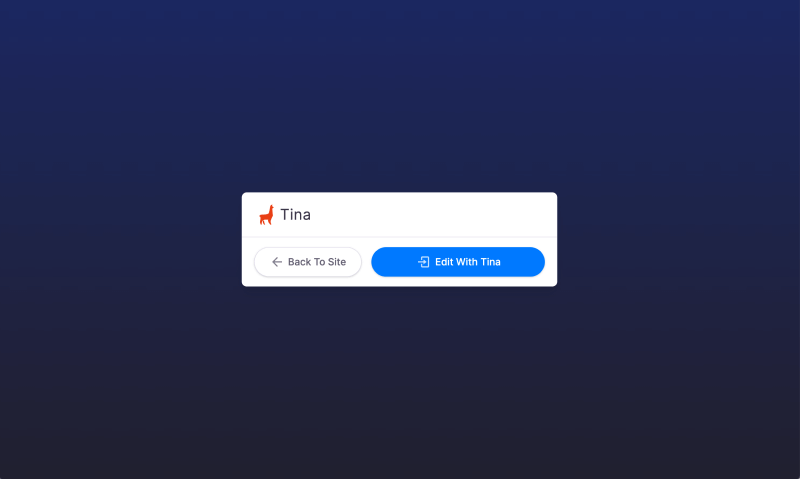Docs
Learn
Adding Tina to an Existing Site
Note: This doc assumes that you have a working site. If not, you can quickly get started using one of our NextJS starters.
Adding Tina
We created a quick way to bootstrap a Tina application to show the power of visual editing; from your terminal, enter the following command:
npx @tinacms/cli@latest init
For help with the prompts for non-NextJS based sites, see this guide.
This command will ask you a few questions, and sets up the Tina boilerplate in your application:
- Installs all required dependencies for Tina.
- Defines a basic content schema in the
tinadirectory. - Creates example content in the demo directory.
- (NextJS-only): Edits the
package.jsonto have thedev,build, andstartscripts run the tina GraphQL API.
Updating your build scripts
Depending on your framework, tina init may try to update your package.json scripts.
NextJS Example
"scripts": {"dev": "tinacms dev -c \"next dev\"","build": "tinacms build && next build","start": "tinacms build && next start"}
Hugo Example
"scripts": {"dev": "tinacms dev -c \"hugo server -D\"","build": "tinacms build && hugo"}
These should be applied manually if they haven't been set by the CLI.
A quick test
Now that we have a basic Tina boilerplate setup, you can launch your application using the following command:
yarn dev
When Tina is initialized on a NextJS site, a "/admin/index.html" page is created to allow editors to log in and begin to make content changes.
Now, if you navigate to http://localhost:3000/admin/index.html (assuming your site runs on port 3000), you should see a new CMS landing page has been added to your site!
Note, many frameworks offer a way to redirect/admin/index.htmlto/admin.

Next we'll show you how to use the CMS and start editing some content!